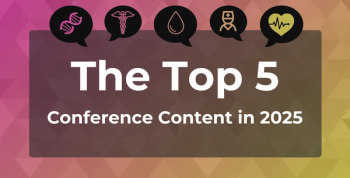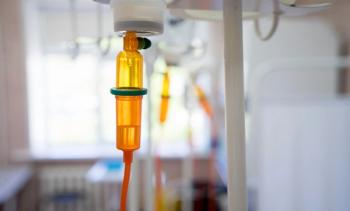
Higher DKA Rates Seen in Black Patients With T1D Throughout COVID-19
Compared with other racial/ethnic groups, Black patients with type 1 diabetes (T1D) presented to medical centers with diabetic ketoacidosis (DKA) more often throughout the COVID-19 pandemic, regardless of COVID-19 infection.
Data on diabetic ketoacidosis (DKA) rates collected throughout the COVID-19 pandemic revealed Black Americans with
Findings were published in
Previous research has shown presentations of newly diagnosed T1D have been
To better elucidate trends in DKA throughout this time period, independent of COVID-19 infection, researchers with the T1D Exchange Quality Improvement Collaborative (T1DX-QI) carried out a retrospective cohort study using information from 7 US medical centers.
Data were collected between January 2020 and December 2020 and compared with the same time window of 2019.
“Both patients with established T1D who developed DKA and patients with newly diagnosed T1D who presented in DKA at T1D diagnosis were included,” the researchers explained.
A total of 15,267 patients with T1D who presented in 2019 and 15,176 patients who presented in 2020 were included in the analysis. Researchers also specifically assessed data collected during COVID-19 waves taking place between March-May 2020 (surge 1) and August-October 2020 (surge 2).
Data showed:
- No difference in the absolute number of patients with T1D experiencing DKA in 2019 vs 2020
- A higher proportion of non-Hispanic Blacks (NHB) experienced DKA in 2019 compared with NHW (44.6% vs 16%; P < .001) with this disparity persisting throughout the pandemic (48.6% vs 18.6%; P < .001)
- DKA was less common among those on continuous glucose monitors (CGM) or insulin pumps in 2020 vs 2019 (CGM: 13.2% vs 15%, P<.001; Insulin pump: 8% vs 10.6%, P < .001)
- In contrast with annual DKA totals, a higher proportion of patients had DKA during COVID-19 surges 1 and 2 compared with the same months in 2019 (surge 1: 7.1% vs 5.4%, P < .001; surge 2: 6.6% vs 5.7%, P = .001)
In addition, no differences in the proportion of patients with DKA based on gender, insurance type, or severity of DKA were found, although in 2020, the proportion of patients with a DKA event was higher in those aged 60 years or over and with a glycated hemoglobin lower than 7%.
Findings illustrate the disruptive nature of the pandemic for patients with T1D, while the DKA rates reported correspond with those seen in other international studies.
Despite the “heightened awareness of racial health inequities during COVID-19 and efforts made to address them, we observed that DKA frequency did not improve among NHB as the pandemic progressed,” authors wrote.
In the current study, Hispanic patients tended to fare better with regard to DKA incidence than NHB patients, a finding consistent with previous research; this could be due to differing inequity contributors in each population.
Differential access to diabetes technologies also may have impacted results as “rates of diabetes technology use are lowest by far among NHB, in part due to social inequities and systemic racism.” However, the current dataset precluded researchers from determining any demographic associations of technology users and non-users.
Data included may not have been representative of all US diabetes centers, limiting generalizability, while any DKA events that took place outside of medical centers were not included in the analysis.
“Our work shows racial inequities in diabetes care were present before the pandemic, starkly visible during the pandemic, and will continue to persist after the pandemic—unless we systemically root out and target racial inequities in diabetes care,”
“Minorities continue to be affected by life-threatening yet preventable complications of diabetes more than other groups,” said co-author Nana-Hawa Yayah Jones, MD. “We must redouble our efforts to relieve this burden, both during the COVID-19 pandemic and beyond.”
Reference:
Lavik AR, Ebekozien O, Noor N, et al. Trends in type 1 diabetic ketoacidosis during COVID-19 surges at seven US centers: highest burden on non-Hispanic Blacks. J Clin Endocrinol Metab. Published online April 5, 2022. doi:10.1210/clinem/dgac158
Newsletter
Stay ahead of policy, cost, and value—subscribe to AJMC for expert insights at the intersection of clinical care and health economics.









































